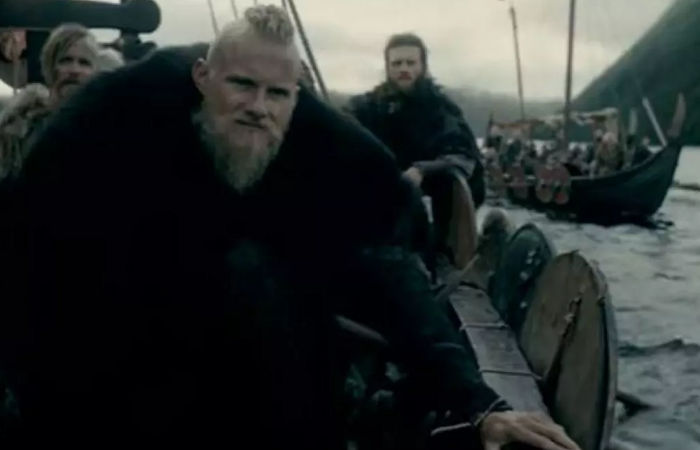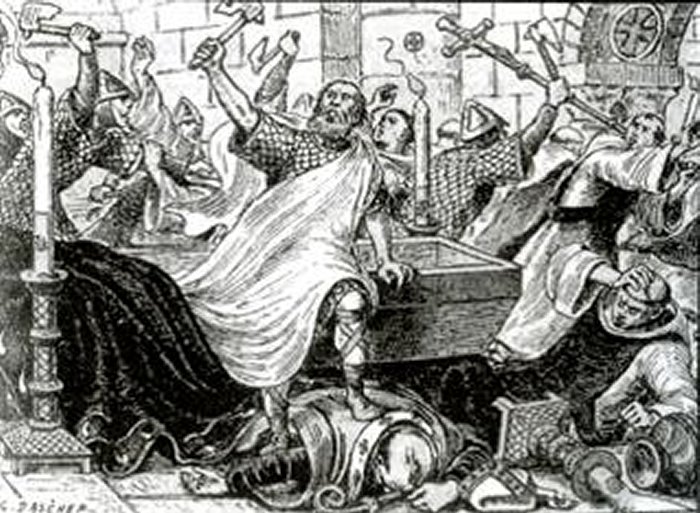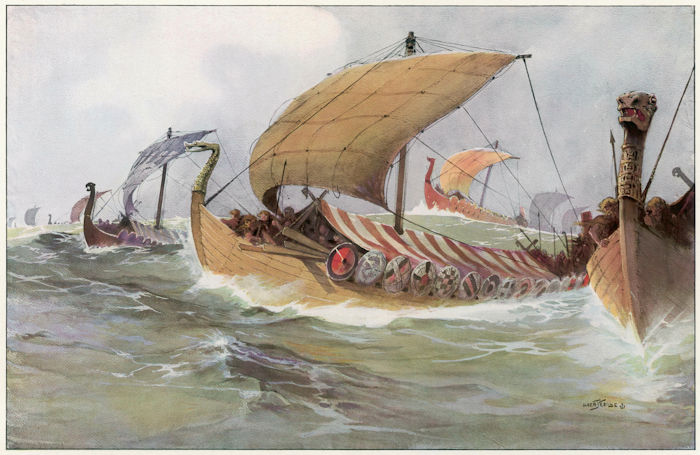Bjorn Ironside: Famous Viking Who Captured Luna By Mistake Instead Of Ancient Rome As Planned
Ellen Lloyd - AncientPages.com - Bjorn Ironside was the son of the famous Sea King Ragnar Lodbrok.
Bjorn Ironside is today remembered for his cunning tactics when his Viking warriors captured Luna, the ancient city of Etruria, Italy. However, this was different from what he planned from the start.
Alexander Ludwig plays Bjorn Ironside in the series Vikings. Credit: IMD
His initial plan was to capture ancient Rome, but things turned out differently than Bjorn Ironside expected. Capturing Luna instead of Rome was, in fact, an embarrassing mistake that made him furious.
Who Was Bjorn Ironside?
Bjorn (Björn Järnsida in Swedish) was a legendary king of Sweden who lived sometime in the 9th century. He was also the first ruler of the Swedish Munsö dynasty. Like his father, Ragnar Lodbrok, Bjorn Ironside was a fearless warrior and fierce ruler. He was considered a great Viking Chief and Naval Commander. He raided and pillaged many places in France, Spain, Italy, England, and Wales, including ancient cities in the Mediterranean Sea and the coasts of North Africa.
Ironside was deeply impressed with Ragnar Lodbrok’s conquest of Paris and wished to achieve something of equal importance. So, he decided to plunder ancient Rome, one of the most influential and wealthy cities at the time.
After entering the church, Hastein jumped out of the “coffin” surprising everyone and fought his way to the city gates. Credit: Public Domain
In 859, a vast Viking fleet of 62 ships led by Bjorn Ironside and Hastein set course towards the Mediterranean.
After raiding down the Iberian coast and fighting through Gibraltar, Bjorn and Hastein pillaged the south of France, where his fleet over-wintered, before landing in Italy, where they captured the coastal city of Pisa.
Bjorn Ironside And Hastein Attack Luna
Ancient Rome was now the target. Bjorn Ironside knew it would be tough to get to the city, and it was heavily guarded, and his Viking warriors would need help breaching the walls.
So, Ironside and Hastein came up with a cunning plan. Hastein sent messengers to the city’s bishop. When the Vikings approached the terrified clerics, they said.” We have not come here to plunder. We have no strength left. We are exhausted, and all we want is peace. Allow us to buy what we need. Our chief is very ill. He is dying. He had a deathbed conversion and wishes to receive Christian sacraments and to be buried on the consecrated ground within your church.”
Upon hearing this, the relieved priests allowed the Vikings to enter the city. The “body” of Hastein was brought in by a small group of guards who, according to some accounts, carried swords under their robes. After entering the church, Hastein jumped out of the “coffin,” surprising everyone, and fought to the city gates. He then opened the gates to let his Norse warriors in.
The city’s residents had no chance to withstand the Vikings’ attack. All resistance was crushed, and the city was now in the hands of the Vikings. Hastein was utterly pleased and demanded all residents to kneel before him and pay homage to him as the ruler of Rome. No one said anything except for one person who dared to speak up. He explained to the Vikings this city was not Rome but Luna. In their eagerness to conquer the world’s most powerful city, the Vikings had sailed more to the north than they should have.
Bjorn Ironside and his brother Ivar the Boneless sailed to England to seek revenge for their father's death. Credit: Adobe Stock - Archivist
Hastein was furious when he heard this. He roared that Luna would be punished for this. He gave the order to plunder the city of everything and then set Luna on fire. Residents were to be enslaved, and if there wasn’t enough room on the ships, they would be slaughtered. Ironside’s Viking fleet raided Sicily and the coasts of North Africa. According to some sources, Bjorn Ironside and Hastein reached Alexandria, Egypt.
The Viking fleet had been plundering for three years, and the Norse warriors were tired and eager to return home. On their way back home, they encountered the navy forces of Al-Andalus at the Straits of Gibraltar. The Muslim fleet was ready and waiting to attack the Vikings.
It was an unfortunate encounter for Bjorn and his men as they were hit by a mighty weapon called Greek fire. The encounter with the Muslims was a disaster that ended as a massacre.
When the Viking fleet finally managed to escape, only 20 of the ships had survived the brutal and powerful Muslim forces. Bjorn Ironside wanted to restore the morale of his warriors and ordered his men to plunder the Christian parts of Spain. Then, the Vikings conquered Pamplona and demanded a large ransom to release the city prince. The Viking ships were once again loaded with priceless treasures.
In 862, the Bjorn Ironside and Hastein finally reached France again. Before their adventures in the Mediterranean Sea, they considered France an enemy, but now it felt almost like coming home.
Bjorn Ironside And Ivar The Boneless Revenged Their Father’s Death
After the huge success his sons Ivar the Boneless and Bjorn Ironside achieved through many raids across Europe and the Mediterranean Sea, Ragnar Lothbrok became jealous of his sons and did not want his sons to rule Sweden. He assigned Eysteinn Beli as a surrogate king and set sail to raid the Kingdom of Northumbria and defeat his long-time enemy, King Aella.
However, Icelandic sagas and early English sources state Ragnar was eventually captured by the Anglo-Saxon Christian king Aella of Northumbria. It is said that Ragnar was shipwrecked on the Northumbrian coast. He and his crew survived the wreck, but after meeting the Northumbrians in battle, most of his men were killed, and he was captured by Aelle, King of Northumbria, who ordered him executed by throwing him into a pit filled with poisonous snakes.
Bjorn Ironside defeated Eysteinn Beli and became the King of Sweden. In the Kingdom of Northumbria, Bjorn Ironside and Ivar, the Boneless, sought revenge for the murder of their father.
Viking forces raided Northumbria and captured King Aella alive.
The brothers decided that “the blood eagle” would be a suitable punishment for King Aella. They cut and opened King Aella’s spine, broke his ribs, and pulled his lungs out as the brutal ceremony of blood eagle required and watched the king die.
When Bjorn Ironside and his brothers returned to Scandinavia, they divided the kingdom so that Bjorn Ironside took Uppsala and Sweden.
Bjorn had two sons, Refil and Erik Björnsson, and Erik became the next king of Sweden after Bjorn’s death.
Written by Ellen Lloyd – AncientPages.com
Updated on January 13, 2024
Copyright © AncientPages.com All rights reserved. This material may not be published, broadcast, rewritten or redistributed in whole or part without the express written permission of AncientPages.com
Expand for referencesReferences:
University Press Biographies, Björn Ironside: The Extraordinary Viking
More From Ancient Pages
-
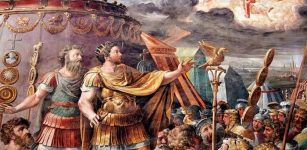 How The Strange Dream Of Roman Emperor Constantine Changed History
Ancient History Facts | Sep 29, 2017
How The Strange Dream Of Roman Emperor Constantine Changed History
Ancient History Facts | Sep 29, 2017 -
 Ancient DNA Pushes Herring Trade Back To The Viking Age
Archaeology | Oct 26, 2022
Ancient DNA Pushes Herring Trade Back To The Viking Age
Archaeology | Oct 26, 2022 -
 On This Day In History: Albert Einstein Publishes His General Theory Of Relativity – On Mar 20, 1916
News | Mar 20, 2017
On This Day In History: Albert Einstein Publishes His General Theory Of Relativity – On Mar 20, 1916
News | Mar 20, 2017 -
 Strange Radiation Case – Medical Files Secretly Erased?
Featured Stories | Sep 13, 2019
Strange Radiation Case – Medical Files Secretly Erased?
Featured Stories | Sep 13, 2019 -
 Mystery Of The Knights Templar – Secret Mission And Loss Of A Great Treasure – Part 2
Ancient Mysteries | Aug 23, 2019
Mystery Of The Knights Templar – Secret Mission And Loss Of A Great Treasure – Part 2
Ancient Mysteries | Aug 23, 2019 -
 Amazing Thirteen Ming Tombs: Gigantic Stone Animals And Human Figures Were Symbols Of Royal Power
Civilizations | Oct 1, 2018
Amazing Thirteen Ming Tombs: Gigantic Stone Animals And Human Figures Were Symbols Of Royal Power
Civilizations | Oct 1, 2018 -
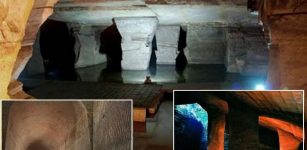 Underground Man-Made Longyou Grottoes Remain An Ancient Unsolved Mystery
Ancient Technology | Jan 16, 2019
Underground Man-Made Longyou Grottoes Remain An Ancient Unsolved Mystery
Ancient Technology | Jan 16, 2019 -
 Secrets Of The Gods – Why The Papyrus Of Manetho And His Pre-Dynastic King List Upset Egyptologists
Ancient Mysteries | May 16, 2017
Secrets Of The Gods – Why The Papyrus Of Manetho And His Pre-Dynastic King List Upset Egyptologists
Ancient Mysteries | May 16, 2017 -
 Unusual 2,500-Year-Old Face Urns Reveal Garments, Appearance And Jewelry Of Prehistoric People
Archaeology | Nov 11, 2017
Unusual 2,500-Year-Old Face Urns Reveal Garments, Appearance And Jewelry Of Prehistoric People
Archaeology | Nov 11, 2017 -
 Biblical Cherubim – Sweet Angels Or Dangerous Creatures With A Hidden Agenda?
Ancient Mysteries | Jun 9, 2018
Biblical Cherubim – Sweet Angels Or Dangerous Creatures With A Hidden Agenda?
Ancient Mysteries | Jun 9, 2018 -
 Secret Encounter With A Mysterious ‘Out-Of-Place’ Lost Tribe In The Amazon Jungle – Did They Possess Strange Mental Powers?
Featured Stories | Jan 16, 2025
Secret Encounter With A Mysterious ‘Out-Of-Place’ Lost Tribe In The Amazon Jungle – Did They Possess Strange Mental Powers?
Featured Stories | Jan 16, 2025 -
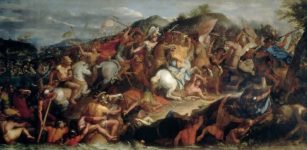 On This Day In History: Alexander The Great Defeats Darius III Of Persia In The Battle Of The Granicus On May 22, 334 B.C.
News | May 22, 2016
On This Day In History: Alexander The Great Defeats Darius III Of Persia In The Battle Of The Granicus On May 22, 334 B.C.
News | May 22, 2016 -
 Wasabi Plant Can Save Ancient Bio-Deteriorated Papyrus
Scripts, Paintings & Inscriptions | Apr 4, 2024
Wasabi Plant Can Save Ancient Bio-Deteriorated Papyrus
Scripts, Paintings & Inscriptions | Apr 4, 2024 -
 Vast Network Of Previously Unknown European Bronze Age Megastructures Discovered
Archaeology | Nov 20, 2023
Vast Network Of Previously Unknown European Bronze Age Megastructures Discovered
Archaeology | Nov 20, 2023 -
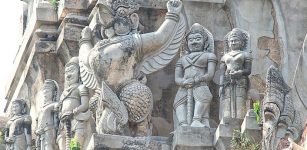 Sacred Bird Garuda And Stealing Of Amrita Drink Of Immortality From The Gods
Featured Stories | Jun 5, 2019
Sacred Bird Garuda And Stealing Of Amrita Drink Of Immortality From The Gods
Featured Stories | Jun 5, 2019 -
 On This Day In History: Great Fire Of London Ends – On Sep 5/6, 1666
News | Sep 5, 2016
On This Day In History: Great Fire Of London Ends – On Sep 5/6, 1666
News | Sep 5, 2016 -
 Golden ‘Etruscan’ Orphic Book – Six Golden Pages Of The Oldest Book In History Of Mankind
Artifacts | Mar 27, 2020
Golden ‘Etruscan’ Orphic Book – Six Golden Pages Of The Oldest Book In History Of Mankind
Artifacts | Mar 27, 2020 -
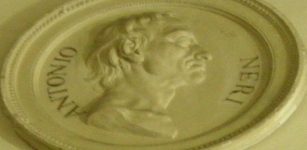 On This Day In History: Antonio Neri Was Born in Florence, Italy – On Feb 29, 1838
On This Day In History | Feb 29, 2020
On This Day In History: Antonio Neri Was Born in Florence, Italy – On Feb 29, 1838
On This Day In History | Feb 29, 2020 -
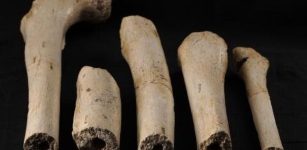 Ancient Human Remains A The Sima De Los Huesos Site Investigated
Archaeology | Mar 15, 2023
Ancient Human Remains A The Sima De Los Huesos Site Investigated
Archaeology | Mar 15, 2023 -
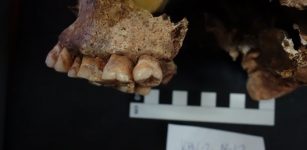 Milk Enabled Massive Steppe Migration
Archaeology | Sep 15, 2021
Milk Enabled Massive Steppe Migration
Archaeology | Sep 15, 2021

